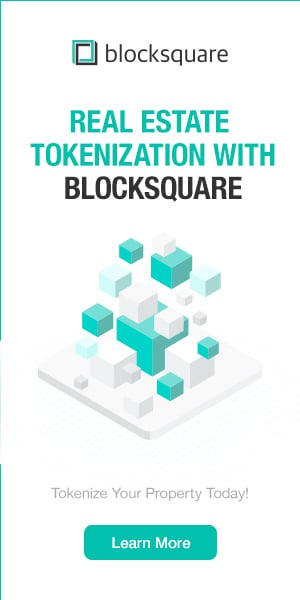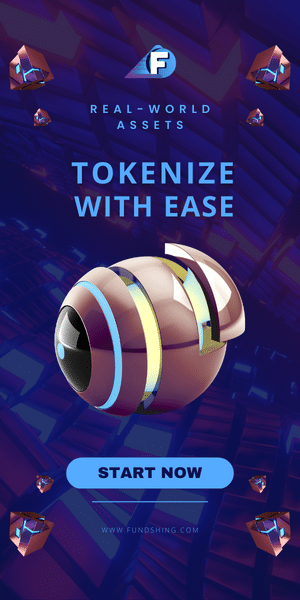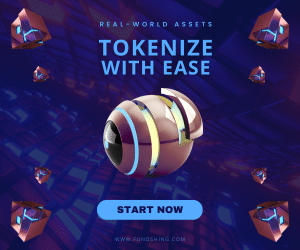A new wave of Security Token Offerings: digitizing alternative investments
As blockchain development accelerates, countless use cases continue to emerge. While these applications span a diverse range of market segments, many in the space aim to bridge the gap between conventional and digital finance. Typically, these platforms intend to overcome the pitfalls of traditional finance and legacy investment products.‘
By Nelson Chu
Arguably, this emerging trend has been the driver of asset digitization. In converting typically illiquid assets into liquid ones, the investment opportunities are hard to dispute. Investors are empowered to explore previously unattainable assets through fractional ownership, diversifying markets and improving accessibility.
Almost anything can be digitized, and several companies are exploring the space. For instance, Harbor is pursuing the tokenization of real estate, Republic aims to digitize startup fundraising, and Securitize is putting funds on to the blockchain. However, very few platforms have endeavoured to take on alternative investment products like debt and private credit.
As one of the fastest growing asset classes in private capital markets, private credit is poised for successful digitisation. With the asset class growing at 20% CAGR since 2000, the numbers don’t lie. And while there are undeniable benefits of investing in this alternative market, there are significant challenges to widespread involvement.
What are alternative investments?
Global markets have been through a lot in the last decade. Many portfolios have borne the brunt of ongoing volatility and lingering recessionary pressures. Alternative investments such as private credit are an excellent way for investors to hedge against this volatility while generating a passive income that current low-yield investments can’t. However, because of its relatively new arrival, the private credit market remains notoriously opaque.
Understandably, this presents challenges for both investors and specialty lenders alike. Unlike mature public markets, where technology continues to evolve in response to the involvement of large banks and exchanges, private credit markets remain antiquated. As a result, the specialty lender fundraising process is still mostly manual; wasting time, capital, and resources.
On the other side of the market, those looking to participate in the private credit market can’t find these opportunities or are denied access to viable investments due to high barriers to entry. To facilitate further growth in the space, there are certain hurdles to private credit deployment that must be addressed.
Why is it challenging to partake in alternative investments today?
To partake in today’s private credit market, the average investor needs the right contacts – a challenging baseline requirement. Institutions such as family offices and credit hedge funds maintain their competitive edge by hoarding relationships with credit issuers to maximize their returns. As a result, alternative investment opportunities are typically offered on a who-knows-who basis.
Beyond this, private credit markets have typically been reserved for accredited or institutional investors simply because of the amount of capital required. Even if an investor were to have the necessary connections, investment opportunities with attractive yields usually require a high minimum investment. Further, these investments may present a long term to maturity with few liquidity options, further restricting investor participation.
To provide further context, the conventional process can be presented as a typical scenario on both sides of the market:
- A specialty lender is lending a borrower $1M for manufacturing for the borrower’s product.
- The lender must create a legal entity for the deal, engage in fund formation, engage lawyers to create investment documentation such as subscription agreement and private placement memorandum.
- The lender must solicit investors to fund this loan, undergoing investor relations and underwriting process with each new investor, usually spending money on marketing.
- The lender may choose to partner with a credit facility, usually provided by a fund and on disadvantaged terms to the lender.
- On average, fundraising like this takes 2-3 months, costing the specialty lender around $80K for each new investment vehicle.
- For investors who want to participate, they would have to source these investments either through introductions or cold searching.
- Since the onboarding process is so costly to the originators, they don’t take on new investors easily.
- Even when a new investor is accepted to participate, the investment minimum for a $1M deal can be $100K or more, restricting many investors.
In reviewing the current process in detail, it’s evident that there are several challenges for originators and investors. However, by leveraging the power of distributed ledger technology, several of these hurdles can be overcome.
How do digital assets improve the traditional private credit process?
By digitizing private credit, the opaque nature of the current market can be corrected. Perhaps most importantly, these digital assets offer investors and issuers the transparency they seek when looking to engage in a mature, efficient marketplace. Through the use of smart contracts, all information can be stored on a ledger, powering the mechanics behind the scenes.
This information includes the real-time status of borrowers, underlying assets, external factors, investor allocations, and security characteristics. These security details can include principal amounts, coupons, and payment dates. In making this information transparent and available, it can be used to drive real-world actions in a codified manner.
Ultimately, this translates to an incredibly transparent, streamlined, and auto-executable process for investors. The insights provided by digitization in private markets can also be used to navigate the public market more efficiently.
This revised process for facilitating a private credit transaction can be explained through the following scenario:
- A specialty lender is lending a borrower $1M for manufacturing the borrower’s product.
- After passing an investment platform’s proprietary risk management due diligence process, the lender posts the investment opportunity on the platform to start fundraising – immediately.
- In the traditional market, the fundraising process takes a few days to a few weeks.
- Depending on the regulations and exemptions filed, investors can sign up for the various security token platforms available after passing standard financial services screening including: Know Your Customer (KYC), Anti-Money Laundering (AML), and the Office of Foreign Assets Control (OFAC).
- Investors log onto the platforms to view a list of investments and participate as they please.
The inherent properties of digital assets
While this process is much improved, the inherent benefits of digital securities can be further analyzed to explain the altered workflow.
Streamline operational process
Currently, fractionalizing asset ownership requires a significant amount of manual effort from both buyers and the sellers. Financing originators spend upwards of 25-30 hours per investment offering on operational tasks. This time includes addressing requirements such as Know Your Customer (KYC), Anti Money Laundering (AML), investor relations, subscription documents, Private Placement Memorandum (PPM), and investor onboarding.
Also, investor and regulatory reporting can take up to 20-30 hours each quarter. Through digitization, these processes can be fully automated. The resulting efficiencies enable companies to focus on growing their business rather than operations and reporting, resulting in significant time and money savings.
Capture a wider investor base
With the appropriate exemptions filed, an issuer of these digital securities can open their investment to a wide variety of both domestic and international investors while remaining compliant. By digitizing conventional assets, originators can lower barriers to entry and raise funds from previously excluded investors unable to meet high investment minimums. Also, originators can raise funds from institutions under more favorable terms due to the increased supply of investors:
Domestic investors: Domestic investors on both the retail and institutional side will be able to deploy and access capital on a scale never before seen.
International investors: International investors who are looking for US opportunities can quickly increase or decrease their exposure. Due to their ability to expand both the supply and demand of deals, digital assets will help implement a more democratized and inclusive private capital market.
Reduce transaction fees
Automation through smart contracts will reduce the number of intermediaries required to facilitate transactions. Whether an issuance or a trade, the smart contract will be executed automatically based on preset triggers. Subsequently, each action will represent a legally enforceable event. This arrangement will effectively reduce the fees paid for lawyers, compliance, and operations – ultimately passing on higher yields to investors.
Enable liquidity of illiquid assets
By digitising an asset, the instrument is structured into a tradable product. Traditionally, managing holding periods on an investor-by-investor basis required considerable manual effort. The cost and effort needed to make a trade often outweighed the yield, making the assets illiquid.
However, smart contracts built into securities can identify the investor, the security that is bought or sold, the timing of the order, and whether the investor is eligible for the transaction. These smart contracts enable these securities to be easily traded across exchanges. These processes transform a previously illiquid asset into a more liquid one. Through digitising private debt, private credit markets can be opened up to global retail investors.
The future of digital assets for private credit
Over the past few years, digital assets have made tremendous progress. However, there is still a long road ahead before widespread adoption is achieved. The continued maturation of ecosystem components is crucial to deliver on investor expectations. From issuance to exchange infrastructure, all market players must work collaboratively to unlock the potential of asset digitization.
In the coming years, the impact of digital assets will be seen across all private capital markets. This shift is poised to fundamentally alter how capital is deployed for the better. Through digitization, alternative investments such as private credit will begin to look more like their public counterparts.
Nelson Chu is the founder and CEO of Cadence, the leading institutional investment platform for digitized alternative assets. Prior to founding Cadence, he led a startup consultancy that helped companies build products and raise over $250M in venture funding. He began his career at several leading investment management firms, including Bank of America and BlackRock. He currently serves as an advisor to an ultra high net worth family office and is an active angel investor with notable investments including BlockFi, Cadre, Care/Of, Clover, dv01, Tala and Uala. You can follow him on Twitter, Facebook, Instagram or Telegram.
Photo by Emiliano Arano from Pexels
More Articles:
























